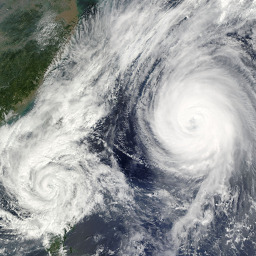6.12.2022
NASA Selects Rocket Lab to Launch TROPICS Mission

Long Beach, California. November. 23, 2022 – Rocket Lab USA, Inc. (Nasdaq: RKLB) (“Rocket Lab” or “the Company”), a leading launch and space systems company, today announced it has been selected by NASA to launch the Time-Resolved Observations of Precipitation Structure and Storm Intensity with a Constellation of Smallsats (TROPICS) mission, as part of the agency's Venture-class Acquisition of Dedicated and Rideshare (VADR) launch services contract.
Rocket Lab will launch the TROPICS mission, which is part of NASA’s Earth System Science Pathfinder Program and consists of four CubeSats in two low-Earth orbital planes, into their operational orbit within a 60-day period. These two dedicated missions will launch on Electron rockets from Launch Complex 2 within the Mid-Atlantic Regional Spaceport at NASA Wallops Flight Facility in Virginia. The launches are scheduled to take place no earlier than May 1, 2023.
The TROPICS constellation targets the formation and evolution of tropical cyclones, including hurricanes. TROPICS will provide rapidly updating observations of storm intensity as well as the horizontal and vertical structures of temperature and humidity within the storms and in their surrounding environment. These data will help scientists better understand the processes that effect these high-impact storms, ultimately leading to improved modeling and prediction.
“This year we once again witnessed the devastating effects of hurricanes and tropical storms on lives and livelihoods, underscoring the importance of improved climate data from space to enable scientists and researchers to accurately predict storm strength and give people time to evacuate and make plans,” said Rocket Lab founder and CEO, Peter Beck. “The TROPICS satellites need a responsive and reliable path to orbit to equip people with near real-time, actionable weather data and Rocket Lab is honored to provide a dependable launch solution as we approach the 2023 hurricane season. We look forward to working closely with the team at NASA to deliver mission success once again.”
Quelle: RocketLab
+++
TROPICS Mission Overview
The NASA Time-Resolved Observations of Precipitation structure and storm Intensity with a Constellation of Smallsats (TROPICS) mission is a constellation of state-of-the-science observing platforms that will measure temperature and humidity soundings and precipitation with spatial resolution comparable to current operational passive microwave sounders but with unprecedented temporal resolution (median revisit time of 50 minutes). As a Venture Class mission, TROPICS is comprised of a constellation of 3 unit (3U) SmallSats, each hosting a 12-channel passive microwave spectrometer. TROPICS will provide imagery near 91 and 205 GHz, temperature sounding near 118 GHz, and moisture sounding near 183 GHz. Spatial resolution at nadir will be around 27 km for temperature and 17 km for moisture and precipitation with a swath width of approximately 2000 km. The primary mission objective of TROPICS is to relate temperature, humidity, and precipitation structure to the evolution of tropical cyclone intensity. See the TROPICS Mission webpage and Blackwell et al. (2018) for more detail.
Early Adopter Program
Objectives
Identify applied research and applications areas relevant to TROPICS
Use current sensors and proxy data to demonstrate TROPICS capabilities and value
Foster interaction between the Science Team and applied research / operational communities
Application Focus Areas

Terrestrial / Disasters

Tropical Cyclone Analysis and Nowcasting

Tropical Cyclone Modeling and Data Assimilation

Tropical Cyclone and Tropical Dynamics
NASA SPoRT Background & Collaboration
The SPoRT Center was established in 2002 for transitioning unique satellite observations and research capabilities to end users to improve short term forecasting and decision support. SPoRT team members work within a research to operations/operations to research paradigm to introduce experimental products to the operational environment via active involvement of end users. Involving the end users in the process ensures the products being developed by the researchers meet the end users' needs. This highly successful paradigm will be utilized in pre-launch activities to engage the applied research and operational forecasting communities regarding the capabilities of TROPICS.
Quelle: NASA
